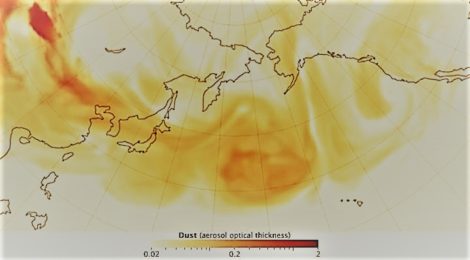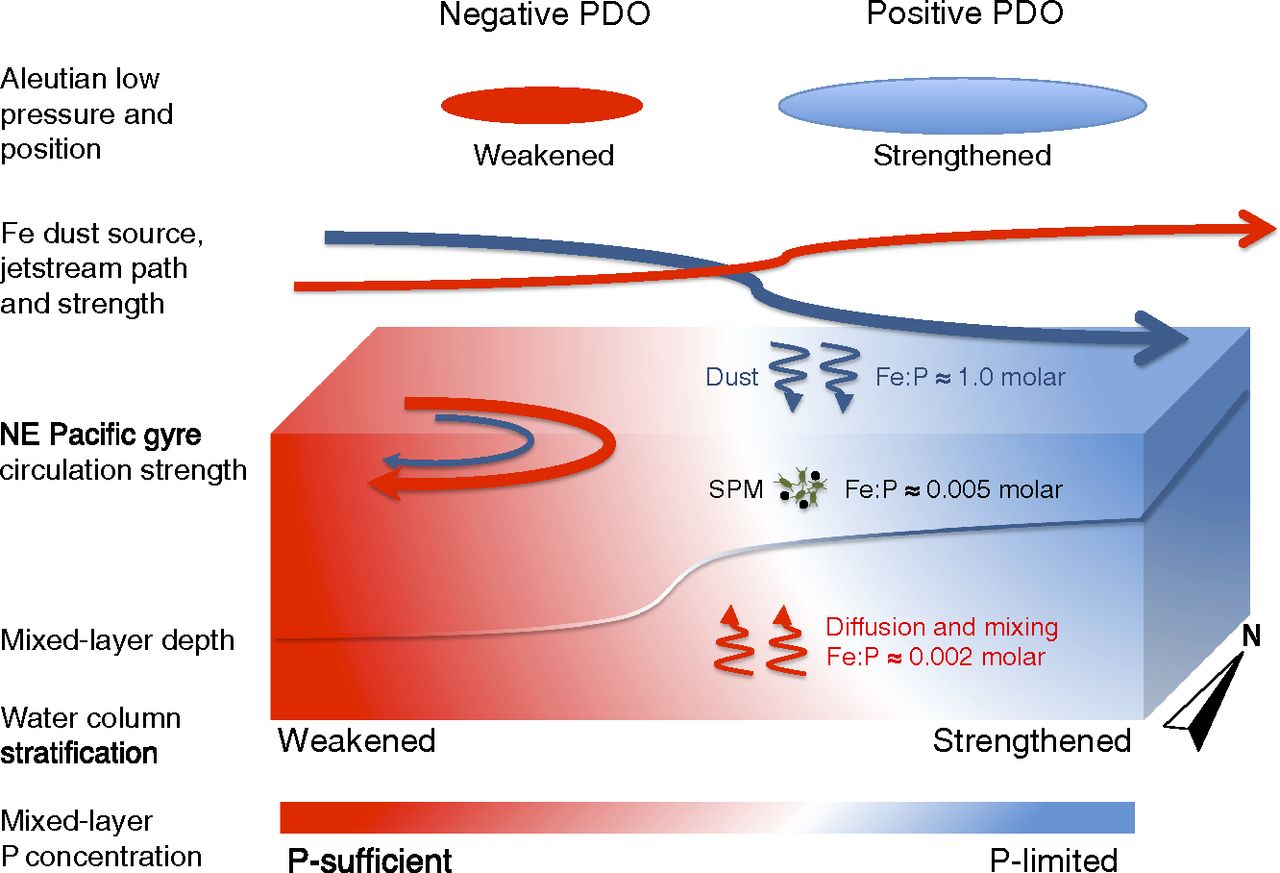
North Pacific Dust Declared Key To Ocean Biodiversity and Survival
Academia can be slow and plodding, but given time, it gets to the truth
40% of this blue planet’s surface consists of ocean regions now described as biological deserts.
These distant and vast ocean gyres that swirl with slow-moving currents are shown to be utterly dependent on something that comes from the land – dust.
40 Million Salmon Can’t Be Wrong – It is dust in the wind that sustains them and all of ocean life
A new paper, just published in PNAS (Proceedings of the National Academy) reports on and confirms the vital necessity to work to replenish, steward and sustain the dusty ecological marriage between land and sea. In this, ocean point of view, paper the scientists report on the episodic arrival of dust that comes from land that keeps vast regions of the world’s ocean alive. These days just barely.
Dust for the oceans sustains the plankton blooms.
It is this dust and ocean ecology that has been the focus of my life for more than 2 decades. My work has been to prove the importance of the dust, and more, to prove we can, and must, replenish the dust that humanity’s industrial age has and is denying the oceans. Our goal is to restore our ocean pastures to historic levels of health and abundance.
Consider the reiteration, in this fine paper, that the vast ocean gyres it speaks of cover 40% of this blue planet, far more than the 28% that is land. One might well imagine that it is vital that these enormous planetary regions be kept in a healthy condition. Instead of being healthy, they are described in this paper as being virtually ‘biological deserts.’ The scientists/authors, with whom I have sat and conversed over that past 20 years, have long agreed but have finally collected the data that show t is the primarily the windblown dust that keeps the blue part of our world alive.
These regions also are thought to be remarkably stable, yet scientists have documented one anomaly in the North Pacific Subtropical Gyre ecosystem that has puzzled oceanographers for years: The region’s chemistry changes periodically, especially levels of phosphorous and iron, affecting the overall nutrient composition and ultimately its biological productivity. Keep in mind this ocean region typically contains parts per trillion iron, and parts per million phosphorus.
Just published in PNAS
In a new study published this week in Proceedings of the National Academy of Sciences, researchers document what induces these variations: changes in the amount of iron that is deposited into the ocean via dust from Asia. The title of a popular press report on the study makes an attempt to introduce this news as ‘new and unexpected’, with the title that describes the finding as an ‘Unlikely Culprit’. So be it in their dodging the controversy that has surrounded this work for more than three decades on this topic.
What is important is that the mainstream ocean science community has finally come aboard. Will their joining as shipmates to save this planet be in time or too late, that is a question to ask. But for now, welcome aboard Mateys’
“We now know that these areas that were thought to be barren and stable are actually quite dynamic,” said Ricardo Letelier, an Oregon State University biogeochemist and ecologist, who in collaboration with David Karl at the University of Hawaii led this study.
“Since these areas cover so much of the Earth’s surface, we need to know more about how they work in order to better predict how the system will respond to climate variations in the future.”
The study focused on the North Pacific Subtropical Gyre, and used three decades of observation data from Station ALOHA by the Hawaii Ocean Time-series program, which is funded by the National Science Foundation.
The surface layer of the North Pacific gyre is characterized by clear blue waters. That clarity defines an ocean desert sustained by barely any nutrients. While this means the ocean is a desert the extraordinary optical clarity has the effect of allowing sunlight to penetrate deep into the water column and support photosynthetic activity below 100 meters (or 328 feet)!
In some parts of the world’s oceans, the surface water is sustained by nutrient-rich water mixing up from the deep. But for the 40% described in this paper, these barren ocean pastures stratified and almost no nutrients from the deep reach the surface. Both phosphorous and iron are key components for life and here the researchers reported that the levels of those nutrients in North Pacific gyre surface waters changed significantly during the three decades of the study.

Dust and its role in the North Pacific – Letelier & Karl et al 2019 PNAS
Letelier said the team was able to relate these changes to the iron input from Asian dust. A key to that variance is the Pacific Decadal Oscillation, an ocean-atmosphere relationship that varies between weak and strong phases of atmospheric pressure in the northeast Pacific. In years when the low pressure weakens, winds from Asia become stronger, move more southward, and bring more dust, fertilizing the ocean surrounding Station ALOHA. When the pressure strengthens, the opposite takes place.
Many papers in the scientific literature on aeolian, wind-blown, dust have reported on the decline of Asian dust over this time span. This dust decline similarly correlates with the collapse of ocean fisheries.
Climate Change Troughs
Given that we live in an age of ‘climate change’ as the cash cow for all research the scientists add to their commentary a pitch. As the Arctic warms, the scientists say they expect to see long-term changes in wind patterns across the North Pacific. In addition, the evolution of land use and pollution is driven by anthropogenic activity in Asia. That clearly affects the sources and magnitude of iron and other nutrients carried by the wind to sustain the ocean ecosystems/pastures.
If you want a quick entertaining education on the importance of dust and the oceans just watch this short music video made by my band and I a few years back.
40 Million Salmon Can’t Be Wrong
The Wilds – 40 MILLION SALMON CAN’T BE WRONG from Artist Response Team on Vimeo.









I’m amazed, I must say. Seldom do I encounter a blog
that’s equally educative and entertaining, and let me tell you, you’ve hit the nail on the head.
The issue is an issue that too few men and women are speaking intelligently about.
Now i’m very happy I stumbled across this during my search for something concerning this.